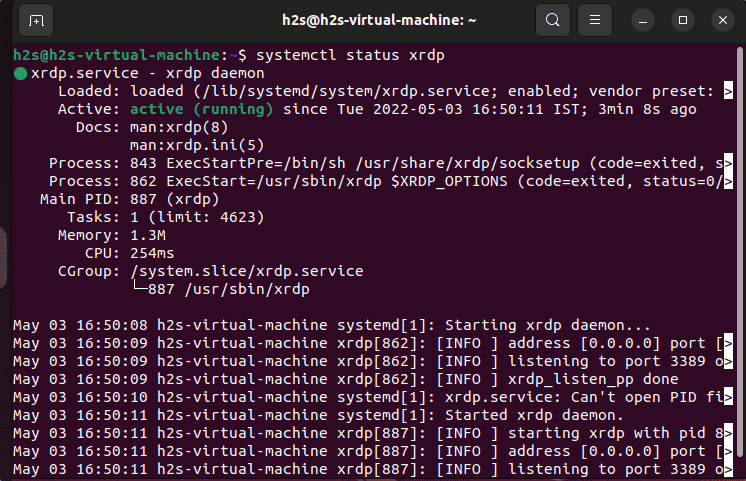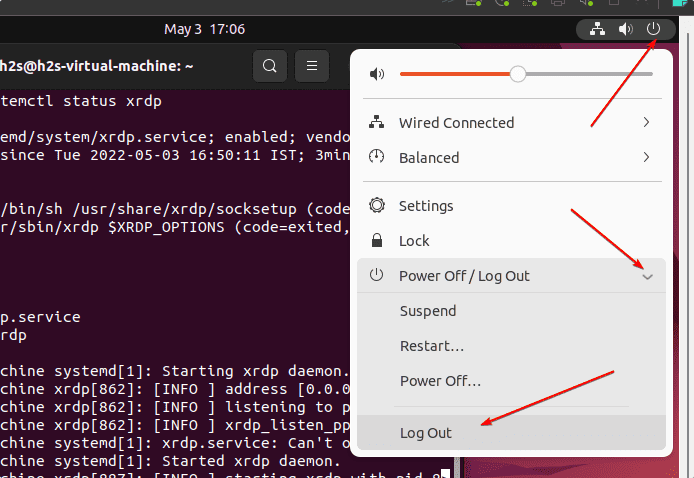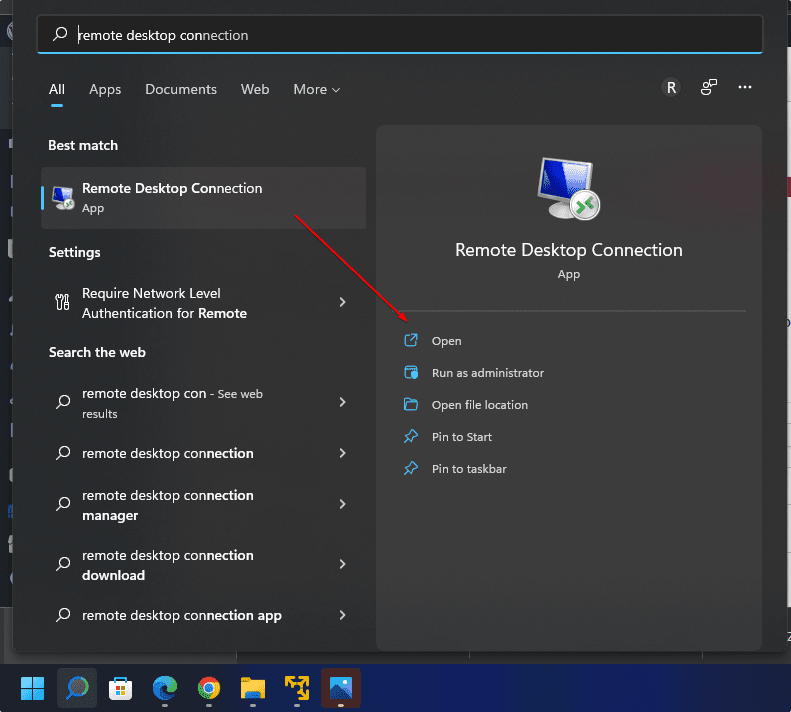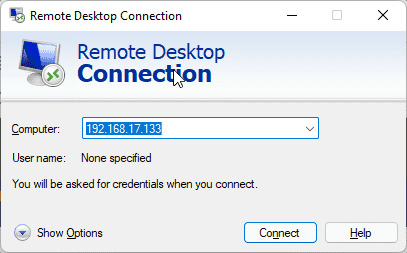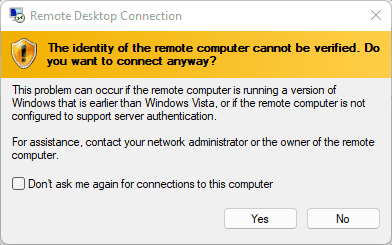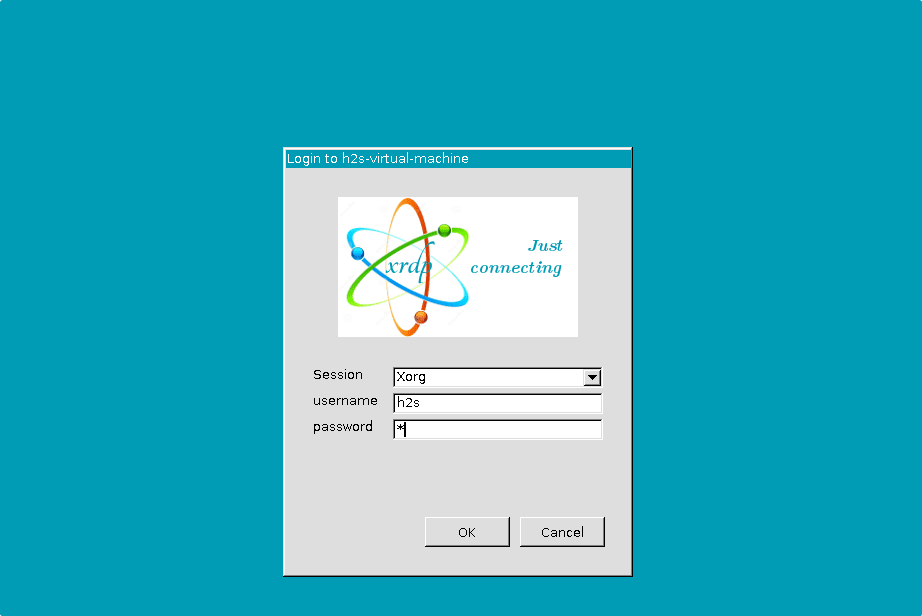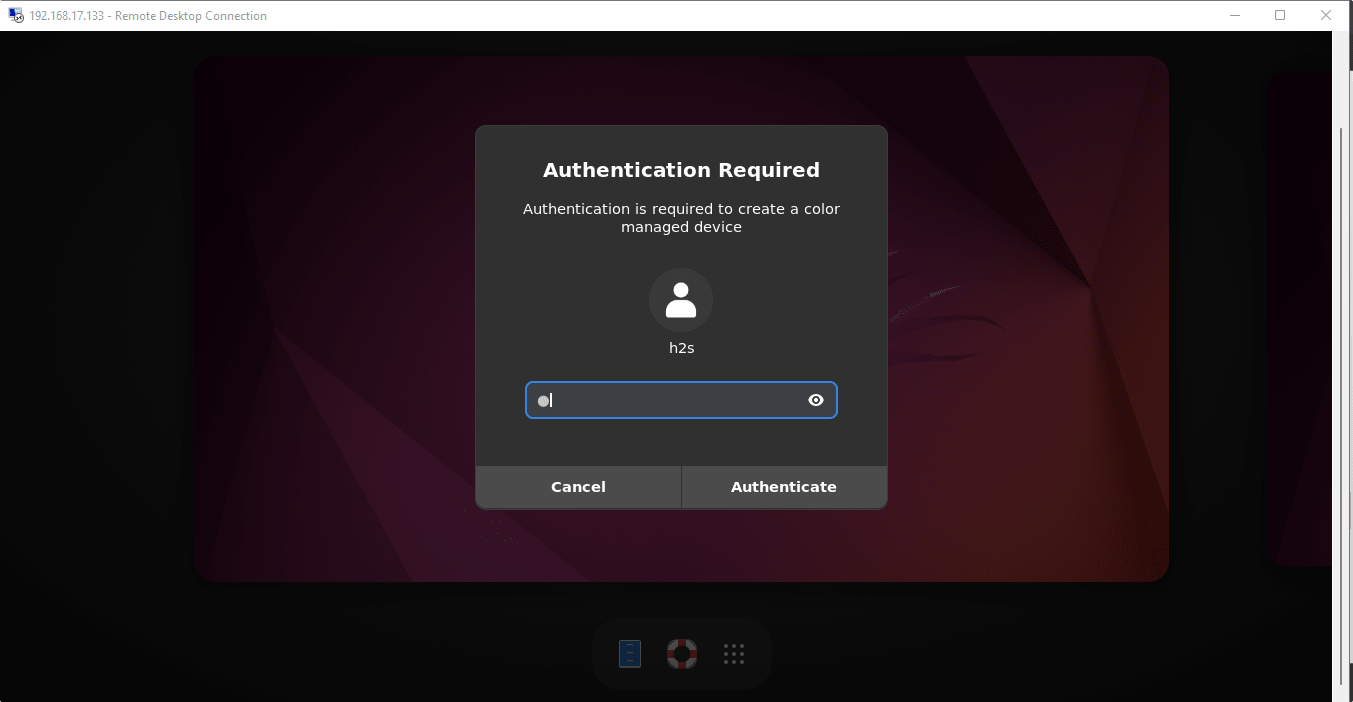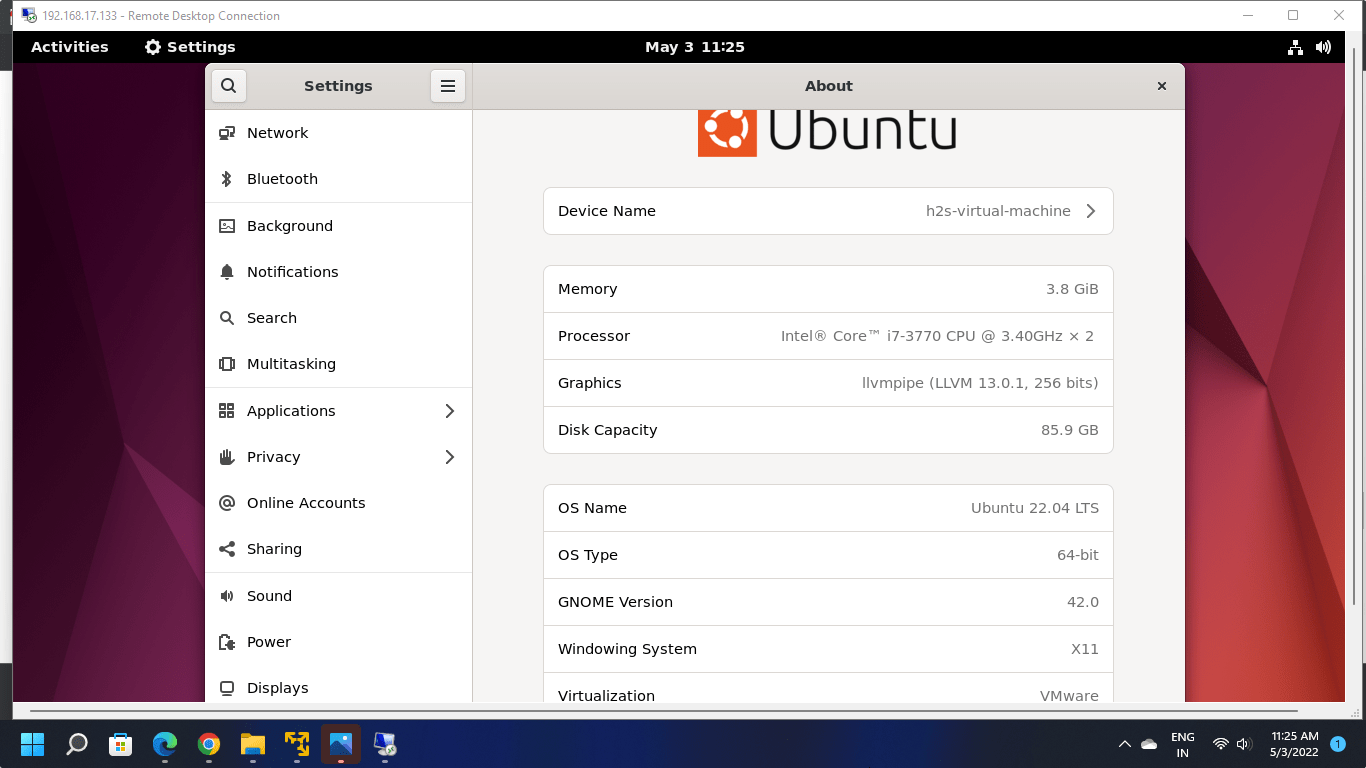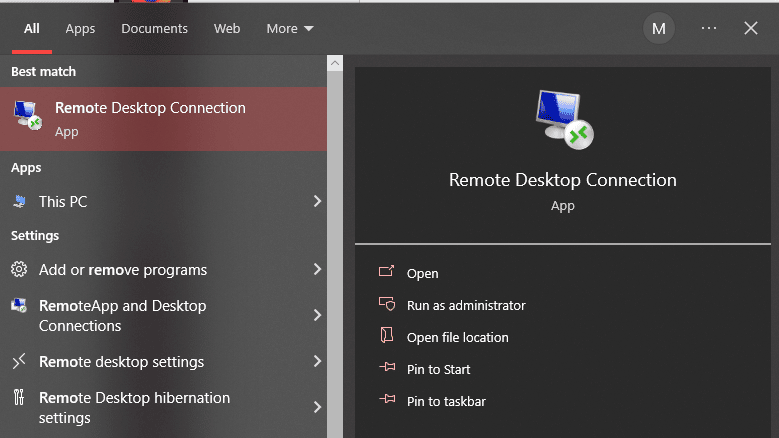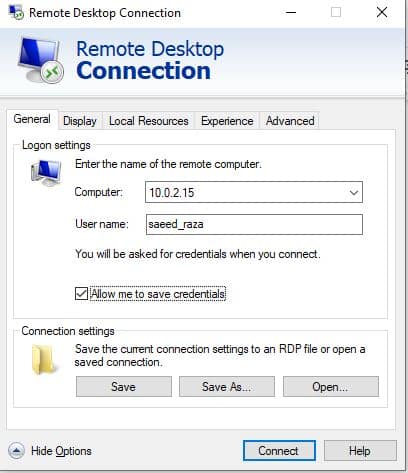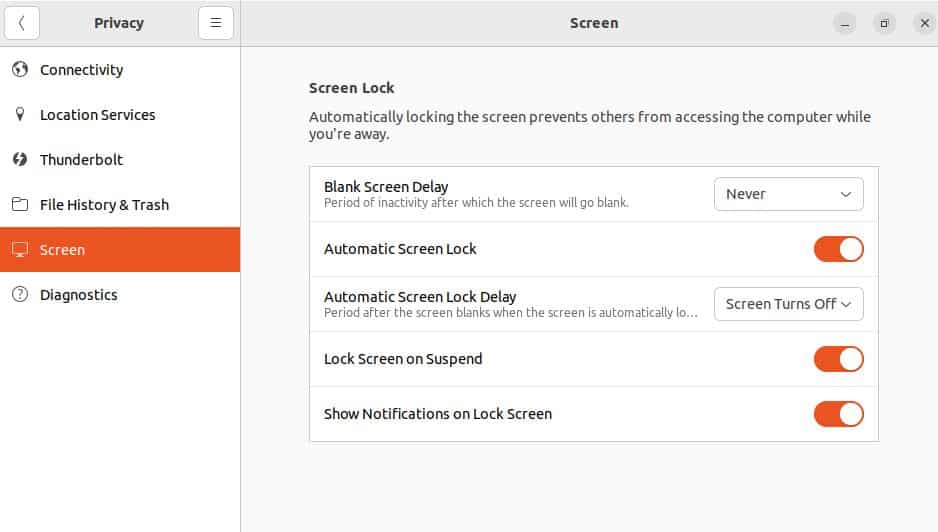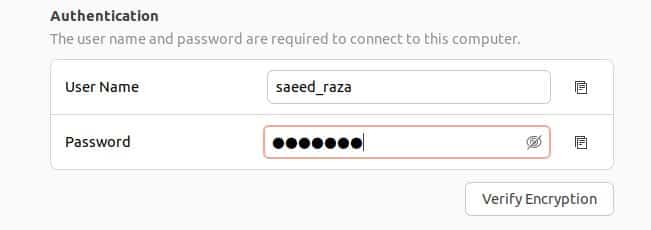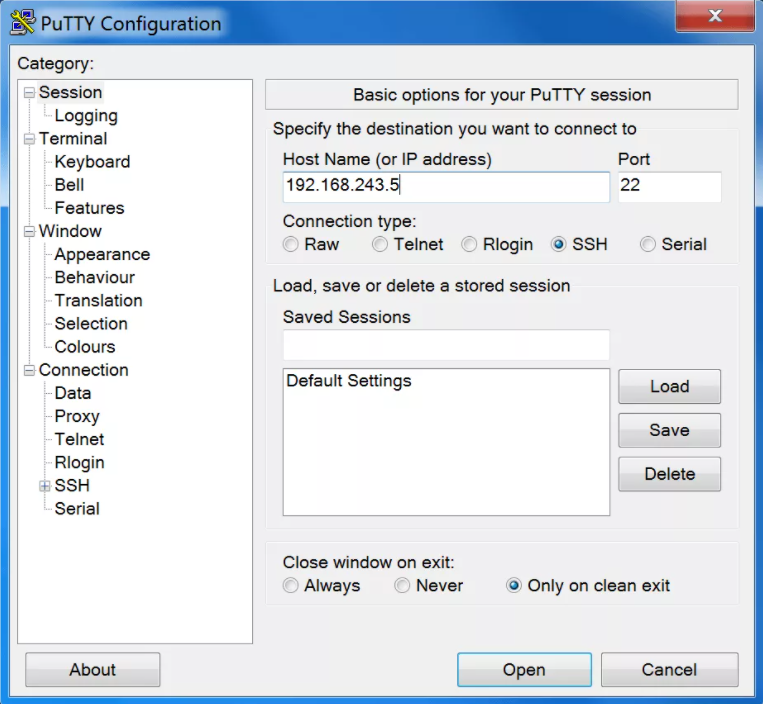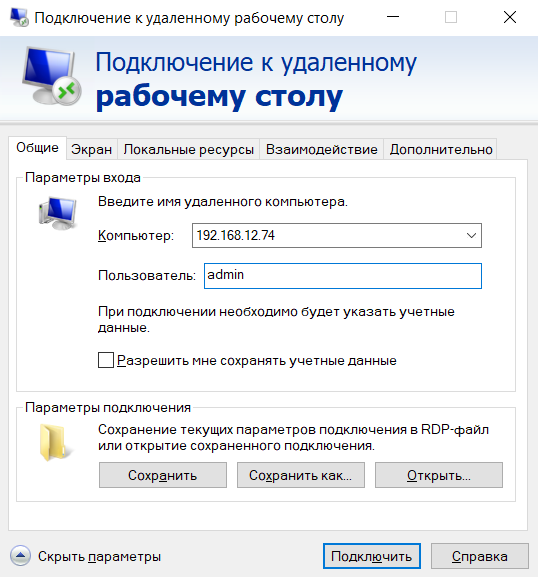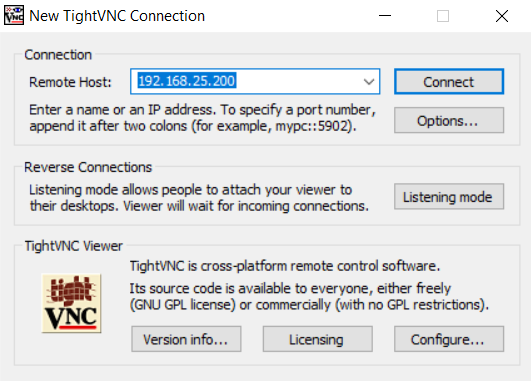Learn the steps to connect remote Ubuntu 22.04 LTS Jammy JellyFish desktop from Windows 11 or 10 using RDP (remote desktop protocol).
Windows comes with a very handy feature called Remote Desktop Connection, which uses RDP protocol to connect a PC remotely. Although it is very easy to use when it comes to establishing a remote desktop connection from Windows to Windows systems, not the same goes for the Linux system. It is because the RDP protocol has not been installed in Linux by default. In such a situation we have to use manually perform some configuration on the Linux system to enable RDP, here in this guide we know how to do that.
What is XRDP?
XRDP is a free and open-source program and an implementation of Microsoft RDP (Remote Desktop Protocol) to easily access Linux systems remotely with GUI. With XRDP, it is possible to log on to the remote Linux computer and create a real desktop session as if you had logged on to a local computer.
Steps to access Ubuntu 22.04 remotely from Windows 10 or 11
The steps given here can be used on other versions of Ubuntu such as 20.0/18.04 including Linux Mint, MX Linux, and more…
1. Perform a System update
Here in this tutorial, we are going to use the system’s default repository and APT package manager. Hence, to rebuild the APT cache run the system update command once.
sudo apt update
2. Install XRDP on Ubuntu 22.04
As we know Ubuntu doesn’t have RDP installed like Windows OS, hence, we need to install XRDP, the open-source implementation of RDP on our Linux system. The good thing, we don’t need to add any third-party repository because it can be installed using the system’s default one.
sudo apt install xrdp
3. Start & Enable XRDP Service
To start and also make the service of XRDP enable automatically with system boot use the given commands:
To start it:
sudo systemctl start xrdp
Enable it:
sudo systemctl enable xrdp
Check the status:
systemctl status xrdp
4. Open port 3389 in the firewall
To let the other systems in the network access Ubuntu 22.04 Jammy remotely over RDP, open the port number 3389 on your system’s firewall.
sudo ufw allow from any to any port 3389 proto tcp
Next, find the Ip-address of your Ubuntu system and note it down, somewhere. For that on your terminal run:
ip a
5. Log out Ubuntu 22.04
Once the installation is completed, simply log out your Ubuntu 22.04 system otherwise you will get a black screen issue on Windows while connecting Ubuntu remotely using XRDP.
To log out, click on the Power-off icon and select the logout option.
6. Connect Ubuntu 22.o4 remotely using Windows 10 or 11
Finally, go to the Windows 10 or 11 system you are using and click on the Search icon. There type “Remote Desktop Connection” as its icon appears, and click to open the same.
Enter the Ip-address of your Ubuntu system noted down by you, in the “Remote Desktop Connection” app of Windows and click on the “Connect” button.
For example, our Ubuntu 22.04 IP address was 192.168.17.133
When the message appears “The identity of the remote computer cannot be verified. Do you want to connect anyway?”
Click the Yes button.
The XORG window will open, enter the username and password of your remote Ubuntu 22.04 that you want to connect over RDP to control it graphically.
The system will again ask for your system’s password.
Finally, the remote Ubuntu 22.04 LTS graphical screen will be on your Windows system using the Remote desktop protocol.
Ubuntu remote desktop black screen- issue
The issue of getting a black screen or automatically shutting down the Remote desktop connection application on Windows appears if you have not logged out of your remote Ubuntu 22.04 system that you want to connect to. Because using RDP, here we can only open a single session.
Other Articles:
• Commands to Install Xrdp Server on Debian 11 Bullseye Linux
• How to Install 7-Zip on Ubuntu 22.04 LTS
• How to Download Youtube videos on Ubuntu 22.04
• Install VMware Workstation Player on Ubuntu 22.04 LTS
You’re in one room, sitting at a PC; the data you want is in another, on a computer running Ubuntu. If both computers are in the same house, no problem, but what if they’re in different offices? It might be a bit of a walk!
The answer, therefore, is setting up a remote desktop connection. Learn how to set up a remote desktop from Windows to Ubuntu.
Why Remote Connect to Ubuntu From Windows?
There are several reasons why you might want to remote connect to your Ubuntu computer. Perhaps you’re at work and need to log into your home computer. Alternatively, you might have an Ubuntu PC in one room and your Windows PC in another. Maybe you want to run updates on Ubuntu or access files.
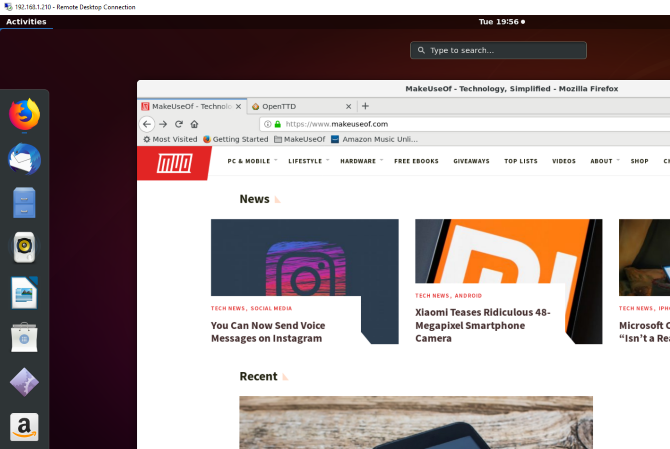
Alternatively, you might be running an Ubuntu server for data, a website, or even a game. Either way, a method of setting up a remote connection will save a lot of time and effort.
You have three key options for establishing a remote connection with an Ubuntu machine running the default desktop environment:
- Remote Desktop (RDP)
- Virtual Network Computing (VNC)
- Third-party remote desktop software
First, however, you need to make some preparations:
- Enable port forwarding on the remote device’s router
- Find the IP address
- Install SSH
Let’s look at these in turn.
Prepare Windows RDP to Ubuntu Connections
Remote access solutions are simple to set up and manage across the same network. However, if you’re working from home, this instantly complicates things.
To use VNC and RDP with a PC on a different network, you’ll need to enable access to the remote computer via its router. You can do so by using «port forwarding.» However, you’ll need the IP address before you set this up.
Find Your Ubuntu PC’s IP Address
Before you can establish remote access to your Ubuntu device from Windows over RDP or VNC, you’ll need the IP address.
The first way is the easiest. Physically go to the Ubuntu machine, press Ctrl + Alt + T to open the Terminal, and input the command:
ifconfig
Look for the «inet addr» against the connection you’re currently using. For instance, if you’re on Wi-Fi, look for wlan0. If the computer is connected to the network via Ethernet, look for eth0.
Another way to find the IP address is to find the network connection icon in the panel, right-click, and select Connection Information. You’ll find the IP address listed here.
Is neither of these options open? You can also connect to your router directly via your computer’s browser.
Once signed into the router’s admin console, you’ll be able to see which devices are connected. Just look for your Ubuntu device name, find the IP address, and make a note of it for later.
Enable Port Forwarding
To access a computer on another network (e.g., your work network), you need to enable port forwarding on the router where your Ubuntu PC is located.
Start by establishing the IP address of the router. You can use the ip r command for this, with grep to specify the default:
ip r | grep default
Make a note of the IP address, then open it in your browser to display the router’s admin console. Enabling port forwarding is simple:
- Look for the Port Forwarding settings
- Create a New Rule labeled Remote Desktop
- Set the Internal Port number to 3389
- Set the External Port number to 3389
- Input the IP address of the Ubuntu PC
- Click Save
Note that these steps are generic and will differ depending on your router. For detailed steps, check your router documentation.
Once saved, you should be able to RDP into the Ubuntu PC remotely via your organization’s static IP address. If your employer does not use a static IP (unlikely, but it happens), use a dynamic DNS provider instead.
Your organization’s system admin can set up port forwarding if you’re not using commercial remote desktop tools.
Set Up Access Using SSH
To save time, you might want to install PuTTY on your PC (or just try the built-in Windows SSH function). It enables you to set up an SSH connection, which gives remote access to the Ubuntu command line.
To be clear: this isn’t a remote desktop option; there is no mouse control. But it is helpful to install the tools you’ll be using remotely. SSH is often disabled by default, however, so if it is not installed, you’ll need to fix it.
In short, it depends on which Ubuntu version you’re using and whether you’ve used SSH previously.
Once installed via the terminal (sudo apt install openssh-server), you’ll be able to make a remote connection to the Ubuntu desktop. Simply enter the IP address and the Ubuntu username and password. You can then use the terminal to install the tools you need for RDP and VNC.
1. Remote Access Using Remote Desktop Protocol
The easiest option is to use Remote Desktop Protocol or RDP. Built into Windows, this tool can establish a remote desktop connection across your home network. All you need is the IP address of the Ubuntu device to establish a remote desktop connection to Ubuntu from Windows.
While the necessary software is pre-installed on Windows, you’ll need to install the xrdp tool on Ubuntu. To do this, open a terminal (Ctrl + Alt + T) and enter:
sudo apt install xrdp
Follow this with:
sudo systemctl enable xrdp
Wait for this to install, then run the Remote Desktop application in Windows using the Start Menu or Search. Type rdp, then click on Remote Desktop Connection. With the app open, input the IP address in the Computer field.
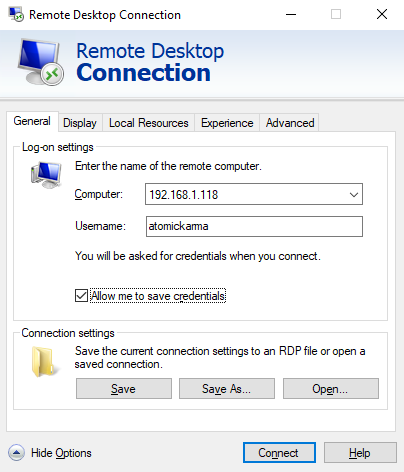
Next, click Show Options and add the Username for the Ubuntu PC. You can click Save to keep these settings for reuse on another occasion.
Click Connect to start the connection and input the Ubuntu account password when prompted. The connection will then be established, giving you full mouse and keyboard access to your remote Ubuntu computer. If you plan to use this connection often, you can create a configuration file to save time.
Troubleshooting RDP to Ubuntu
While RDP is an excellent option for remote connecting to your Ubuntu PC, it’s unreliable on some Ubuntu versions, like 18.04 LTS. There appears to be an issue establishing a remote connection while already logged into the same account on Ubuntu.
As such, the simple way around this is to log out of the Ubuntu computer.
If this isn’t possible, try switching the RDP connection from the Xorg server to X11rdp. Wait for that to fail, then try Xorg again.
You might also attempt a connection after restarting the Linux machine.
Ubuntu 22.04 LTS should include a fix to make RDP to Ubuntu smoother.
2. Connect to Ubuntu From Windows With VNC
Another option with full remote desktop functionality is VNC (Virtual Network Computing). It requires a client application on the Windows PC and a server on Ubuntu.
On the remote PC, install the TightVNC Server component after checking for updates:
sudo apt update
Then install the server utility:
sudo apt install tightvncserver
You’ll then need to run it:
sudo tightvncserver
At this point, you’ll be prompted to set a password for the connection. Make a note of the desktop number, usually :1.
Now that TightVNC Server is set up on Ubuntu, you’ll need to install the client on Windows. You can download it from the official website—make sure you choose the correct version, as it is available in 32-bit and 64-bit flavors.
Download: TightVNC
TightVNC tools are only available as a bundle, so once installed, look for TightVNC Viewer in Windows search.
Once you’ve launched the viewer, input the IP address of the Ubuntu box in Remote Host, followed by the desktop number. So, it might look like this:
192.168.0.99:1
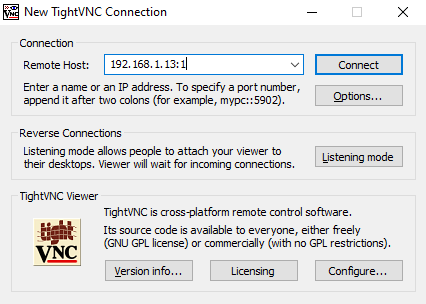
Input the password when prompted and commence your remote desktop activity!
Making TightVNC More Secure
By default, TightVNC will encrypt your password but nothing else. It makes it insecure to connect over the internet. Fortunately, you can enhance security with SSH and Xming.
Download and install the Xming tool for Windows from SourceForge to use this. Once this is done, look for the desktop shortcut, right-click, and choose Properties.
Look for the Shortcut tab, and in the Target field, enter the following:
"C:\Program Files (x86)\Xming\Xming.exe" :0 -clipboard -multiwindow
Click Apply to save the change, then OK. Double-click the icon to run Xming, then open PuTTY. Here, expand the menu on the left to Connection > SSH > X11.
Check Enable X11 Forwarding, then return to Session at the top of the menu.
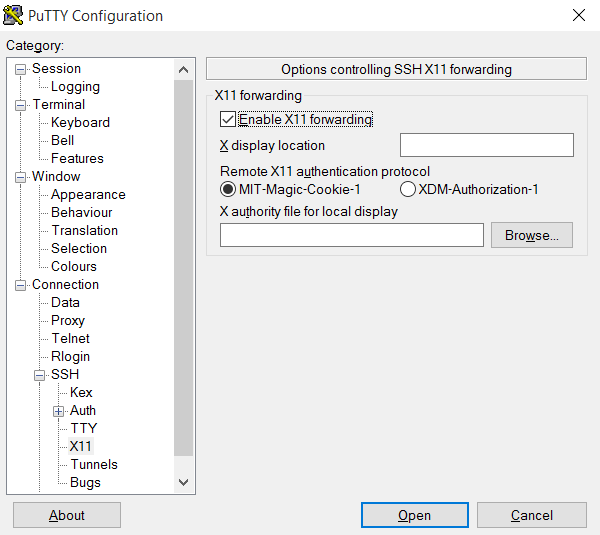
Enter the IP address for the remote device and click Open. Moments later, a secure connection to the remote Ubuntu desktop will be available.
Everything you’ve learned so far is standard if you need to access a Linux PC on your local network remotely. If you need to go beyond that, the steps to enable port forwarding will help.
But what if you have no intention of accessing your router? If this seems too complicated, third-party commercial software designed to facilitate remote desktops is required. Several are available, but not all support Linux.
We suggest you try out:
- NoMachine: Initially released as a Linux remote desktop tool, this is now available across all major platforms. Install on the target computer, then on your local machine, and set up a remote connection.
- Chrome Remote Desktop: Uses your Google account to manage remote access via the Chrome browser.
- TeamViewer: A well-known commercial remote desktop solution. Simply install the client and host software beforehand. It also provides a host app for remotely accessing Raspberry Pi devices.
These tools require setting up before use. If you have a colleague near the remote PC, they might be able to help. See our list of remote access tools for more suggestions.
Choosing the Right Ubuntu Remote Desktop Solution
Which remote desktop tool for connections between Ubuntu and Windows should you use?
Three main options are available:
- RDP: Uses the Windows Remote Desktop Protocol via the open-source xrdp implementation.
- VNC: Virtual Network Computing is an alternative to RDP but less secure.
- Commercial remote software: Most of these require minimal setup and support Linux.
You can also use SSH to issue remote instructions to your Ubuntu PC.
We’ve shown you three ways to establish a remote connection to your Ubuntu computer or server from Windows. Each has its advantages and disadvantages. But if you just want to dip into Ubuntu, try the Windows Subsystem for Linux on Windows 10.
Remote Desktop from Windows help to access a different operating system in Windows itself. Windows & Ubuntu operating systems can be used simultaneously with the help of Remote Desktop Access. Remote Access Ubuntu from Windows process will be discussed in this article by following simple steps on both Ubuntu & Windows.
Method To Establish Remote Access Ubuntu From Windows
On Ubuntu Operating System
Step 1: To develop Remote Desktop from Windows, first open the terminal of Ubuntu & execute the following command in the terminal. It will help to install the XRDP application in Ubuntu that helps to combine different operating systems. It will take some time to install the application.
Command: sudo apt install xrdp -y
Step 2: After installation of the application, run the following two commands. One of the commands will help to start the application that is installed on the device. The second command will help to enable the application on the machine.
Commands:
sudo systemctl start xrdp
sudo systemctl enable xrdp
Step 3: After running the above commands, again execute the following command to show the status of the XRDP application. The status of the application is now running.
Command: sudo systemctl status xrdp
Step 4: At last, execute the following command in the Ubuntu terminal. It will provide configurational details of the machine. Find out the IP Address of the Ubuntu operating system.
Command: ifconfig
Hence, we have successfully completed the operations required in the Ubuntu operating system.
On Windows Operating System
Step 1: To complete Remote Access Ubuntu from Windows, first open the Remote Desktop Connection in the Windows OS & provide the IP Address of the Ubuntu operating system. It will be the same operating system that was noted down earlier. After that, click on the Connect button.
Step 2: In the next tab, click on the Yes button present there to connect Ubuntu from Windows.
Step 3: Now provide the username & password. It will be the same username & password used to enter into the Windows operating system. If there is no password present in the Windows operating system, keep it blank here. Then click on Ok to finish the operation.
Hence, we have successfully completed the operations required to establish remote desktop access to Ubuntu From Windows
Last Updated :
27 Apr, 2023
Like Article
Save Article
The latest version of Ubuntu 22.04 LTS allows us to access the remote desktop from the Windows. Windows 10 provides the “Remote Desktop Connection” tool which is a fairly effective tool that connects the system remotely via the RDP protocol. The remote connection between two Windows systems is quite simple as compared to the Linux system as the Linux system does not include the RDP protocol by default. We can manually configure the Ubuntu 22.04 to enable the remote desktop connection.
The RDP protocol allows the users to establish the secure connections to other systems via the internet. They can interact with the graphical user interface on the remote server in a way that is similar to what they would with a desktop system using their mouse and keyboard. We use this RDP protocol because it can establish the connection with non-Microsoft operating systems like Ubuntu 22.04 or many others. We have some steps to follow in Ubuntu 22.04 for the remote connection.
Remote Desktop Access of Ubuntu 22.04 from Windows 10 with the Command Line
To remotely access the Ubuntu 22.04 in Windows 10, we use the xdrp application. This enables us to use the Windows application known as “Microsoft Remote Desktop Connection”. By utilizing the xdrp, we can remotely sign in to Ubuntu 22.04 and establish a desktop session as we were logged in to a local machine. To do so, we install the xdrp into our Ubuntu 22.04 which does not require any third party as the system has a built-in apt repository to install it.
First, we update our system with the apt update command. This updates the system packages and dependencies.
The system is updated successfully. Now, we can easily install the xdrp under the sudo privilege with the apt command. The following command execution shows the installation of the xdrp application in Ubuntu 22.04.
The prompt asks for the continuation of the installation as shown in the most recent line of the previous image. By entering, the “Y” proceeds with the installation as “Y” is assumed to be “yes”. After this, xdrp is installed in our Ubuntu 22.04.
To start the xdrp, we use the enable or start keyword with the systemctl command. We enable the xdrp remote desktop server with the following system boot:
Now, we open the port 3389 for the system firewall which allows the other systems to access the Ubuntu 22.04.
Next, we access the IP address of Ubuntu 22.04 through the “-I” flag with the hostname command. The IP address is generated on the screen which we will use later to connect with the window.
Once we are done with the xdrp installation, our system should be logged out to avoid generating the black screen on Windows 10 while connecting to Ubuntu 22.04 with the xdrp application remotely. Then, we search for the “Remote Desktop Connection” from the Windows menu and launch it by clicking on it.
Here, the “Remote Desktop Connection” is opened and we have the options that should be filled. First, we assign the IP address to the “Computer” option. We allocate the IP address of our Ubuntu 22.04 which we fetched from the command line. We can also get the IP address from the wired connection from the Ubuntu 22.04 settings. Next, we provide the user name which we use for our Ubuntu 22.04. We mark the “Allow me to save credentials” to save this connection from the future sharing of remote desktops. Then, press the “connect” option to remotely connect with Ubuntu 22.04.
Once the connection is established, we log in again to our system to share the Ubuntu 22.04 screen. It takes some time to initiate the remote connection with Ubuntu 22.04.
Remote Desktop Access of Ubuntu 22.04 from Windows 10 with the GUI
We have seen the instructions to connect the remote desktop of Ubuntu 22.04 to Windows 10. Now, we have the Ubuntu 22.04 GUI procedure to access the remote desktop. Before this, we follow some prerequisites of Ubuntu 22.04. First of all, we must first activate the automatic login. Then, from the setting page “privacy” option, click the screen. After that, we set the blank screen delay with the never option to maintain the session and disable the automatic screen lock.
Now, from the system setting page, we have the “sharing” option. By default, the toggle button of “sharing” is off. We open it and make changes. The “sharing” page provides further options that are needed for the remote connection. The “Remote Desktop” option is currently off. When we click on the remote desktop option, it takes us to the dialog box.
Now, we enable the “Remote Desktop” by turning it on. Moreover, we enable the “Remote Control” option to control the sharing screen.
The “Remote Desktop” is enabled to share the screen of Ubuntu 22.04. Then, we scroll down on the same page where we set the authentication setting. The user name and password are required while connecting the remote desktop of Ubuntu 22.04 from the Window.
All the settings to enable the remote desktop connection are completed with Ubuntu 22.04 GUI. Now, we follow the same steps from navigating the “Remote Desktop Connection” app from the window and share the remote desktop of Ubuntu 22.04.
Conclusion
With this guide, we learned to access the remote desktop from our Windows 10 to Ubuntu 22.04. We explored the two methods to enable the remote sharing of the Ubuntu 22.04 desktop from the Window. The first approach is by installing the xdrp with the command line interface. The installation of xdrp is a very simple and compatible client remote desktop connection for Ubuntu 22.04. We can use the RDP across two completely different operating systems and benefit from its convenience. Next, we have the Ubuntu 22.04 graphical user interface approach to enable the remote desktop of Ubuntu 22.04.
Безлимитные тарифы интернета с высокой скоростью соединения упростили администрирование компьютеров. Сегодня все чаще помощь пользователям оказывается удаленно. Это удобно, ведь не надо тратить время на поездки и возможность подключиться есть практически круглосуточно.
Сегодня поговорим об удаленном подключении к Ubuntu из ОС Windows.
Зачем удаленно подключаться из Windows к Ubuntu
Не так важно, где находится удаленный компьютер – в соседней комнате или в другом регионе. Интернет убирает подобные ограничения, главное – чтобы связь оставалась стабильной на все время настройки. Это одинаково относится к машинам, работающим хоть на операционной системе Windows, хоть на Ubuntu. Последние используются, например, для развертывания сервера CS или Minecraft.
Причины, по которым требуется удаленное подключение:
- ручной запуск обновлений на компьютере с Ubuntu;
- настройка системы без подключения локального монитора, клавиатуры;
- работа с машиной, расположенной по другому адресу.
Пользователю доступно три варианта коннекта с компьютеров, работающих на ОС Windows. Выбор зависит от удобства и предпочтений: SSH через приложение PuTTY, встроенная поддержка RDP и виртуальная сеть VNC (понадобится предварительная настройка клиента). В любом случае перед работами понадобится выяснить IP-адрес компьютера, к которому предстоит подключаться.
Комьюнити теперь в Телеграм
Подпишитесь и будьте в курсе последних IT-новостей
Подписаться
Как выяснить IP-адрес компьютера с установленной ОС Ubuntu
Если есть физический доступ к компьютеру с установленной Ubuntu, на нем открывается терминал (комбинация клавиш Ctrl+Alt+T) и вводится команда ifconfig. В отображенном перечне данных имеет значение строка, начинающаяся с inet addr. Если используется подключение через Wi-Fi, то рядом будет его маркер в виде «wlan0». При проводном соединении фраза будет заменена на «eth0». Рядом отображается актуальный IP-адрес машины.
Второй способ заключается в применении функций графического интерфейса. Последовательность действий: найти значок подключения на панели, кликнуть правой кнопкой мышки, выбрать пункт «Сведения о подключении». Там и указан постоянный IP-адрес компьютера. Если доступа к нему нет, то можно выяснить данные через маршрутизатор. В панели управления отображаются активные пользователи вместе с их «контактами».
Подключение к Linux через SSH
Перед подключением на компьютер с Windows устанавливается приложение PuTTY. Это популярный инструмент для организации SSH-соединения, которое предоставит удаленный доступ к командной строке Ubuntu. Важно понимать, что этот режим требует определенного опыта в управлении, ведь здесь нет привычной мыши и «окошек», а все команды передаются в текстовом виде. Отчеты предоставляются в таком же виде.
По умолчанию возможность коннекта через SSH в Ubuntu отключена. Так что предварительно эту систему требуется настроить. Активация функции выполняется вводом команды sudo apt install openssh-server (в той же консоли, где ранее был взят IP-адрес). Логин и пароль подключения будут те же, что используются при входе в операционную систему.
Из-за неудобства управления в текстовой среде этот вариант востребован для удаленной активации более удобных инструментов. Например, тех же протоколов RDP или VNC. В них также пригодится IP-адрес, поэтому получить минимальные навыки работы в консоли все равно рекомендуется. Это упростит решаемые задачи, если по каким-то причинам не удается соединение в других режимах.
Подключение из Windows через RDP
Способ подключения через службу Remote Desktop Protocol (RDP) распространен при работе с машинами на платформе Windows. Популярность инструмента объясняется просто – его поддержка встроена во все виды и версии операционных систем. Все, что понадобится для подключения, уже известно: это IP-адрес, логин и пароль от Ubuntu. Запускается утилита через поиск, называется она «Подключение к рабочему столу».
На компьютере-клиенте требуется установка приложения xrdp.
- Необходимо открыть окно термина нажатием комбинации клавиш Ctrl+Alt+T.
- Ввести текстовую команду sudo apt install xrdp и нажать «Ввод».
- Провести активацию программы командой sudo systemctl enable xrdp.
После установки надо ввести на компьютере-сервере данные доступа и нажать кнопку «Подключить». Если поставить галочку «Разрешить мне сохранять учетные данные», последующие входы будут выполняться без дополнительных вопросов. Но в первый раз пароль всегда вводится вручную. При желании создается отдельный конфигурационный файл (востребовано, когда много компьютеров с удаленным управлением).
После подключения пользователь видит рабочий стол компьютера на Ubuntu. Работа с его окнами не отличается от локального управления – функционируют все настроенные горячие клавиши, перетаскивание мышью. В некоторых версиях Ubuntu, например, 18.04 LTS, RDP не работает, пока не выйдешь из текущего пользователя. Подобные фишки обычно известны системным администраторам.
Подключение через VNC
Есть другой вариант удаленного рабочего стола – сеть Virtual Network Computing (VNC). Она тоже требует предварительной настройки обеих машин. Так, на компьютер с Ubuntu инсталлируется ПО, открывающее доступ к управлению.
Последовательность действий:
- Открыть окно терминала.
- Ввести команду sudo apt update.
- Установить сервер: sudo apt install tightvncserver.
- Активировать его: sudo tightvncserver.
Система предложит ввести пароль для подключения. Он понадобится при активации удаленного соединения, поэтому стоит записать (запомнить) внесенные данные.
На этом все! TightVNC Server готов к работе, остается следом настроить компьютер на Windows. Программа доступна на официальном сайте разработчика в двух версиях: 32 и 64-бит.
После инсталляции и запуска достаточно ввести IP-адрес хоста и пароль доступа, введенный после активации сервера на Ubuntu. Схема работы VNC аналогична предыдущему примеру: пользователь видит перед собой удаленный рабочий стол и управляет функциями операционной системы, как будто сидит за компьютером локально.
